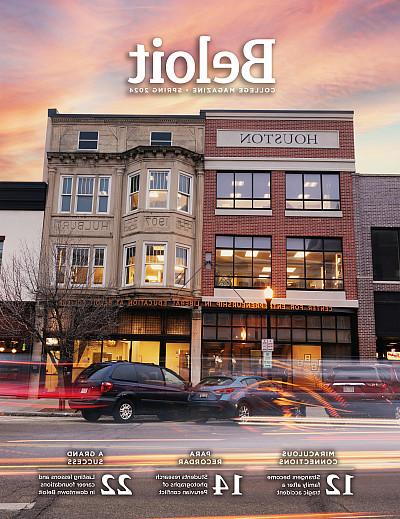Yuyanapaq: A Photography Exhibit, an Assignment, and a Book
十年来,学生和教师的工作汇集成一本书,记录和反思了1980年至2000年间发生在秘鲁的侵犯人权行为, two of the bloodiest decades in the nation’s history.
A new book of photos and essays titled Yuyanapaq Photographs: Two Decades of Peru’s Armed Conflict in Focus, published last fall by Beloit College Press, documents a photography exhibit depicting one of the country’s deadliest periods.
Edited by Pablo Toral, international relations and Latin American and Caribbean studies professor, and Wright Museum of Art Director and Art History Professor Joy Beckman, 这本书包括了托拉尔的学生在过去十年里所写的关于照片的文章.
A search for truth
The photography exhibit “Yuyanapaq. Para Recordar” — translates to “to remember” in both Quechua, Peru’s most widespread indigenous language, and Spanish — first opened in August 2002 at the Museo de la Nación in Lima. A smaller exhibit of some of the photos toured Peru and overseas, including a stop at Beloit College, with support from the Weissberg Program in Human Rights and Social Justice. 它的250多张照片记录了1980年至2000年间发生在秘鲁的侵犯人权事件, two of the bloodiest decades in the nation’s history.
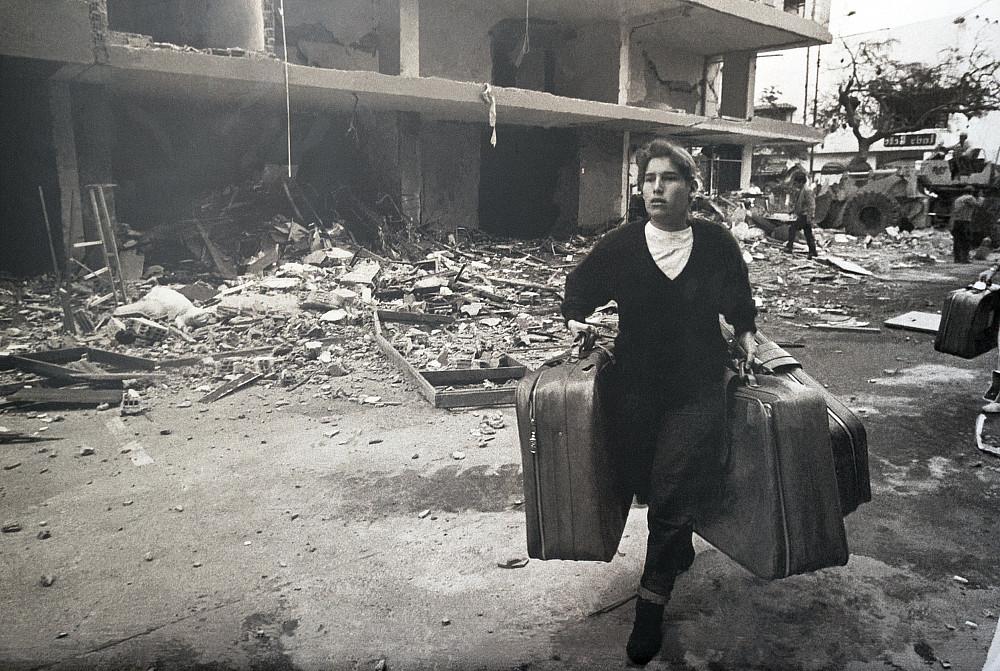
An estimated 70,000 Peruvians died or went missing over the period, many of them from the Quechuaspeaking Ayacucho region in the Andean highlands, which has high rates of poverty and illiteracy. 许多人在军队和游击队手中遭受了难以想象的暴行, including the Shining Path (Sendero Luminoso), a Maoist guerilla group.
秘鲁临时总统Valentín Paniagua于2000年成立了真相与和解委员会, ratified by President Alejandro Toledo in 2001. TRC的目标是澄清和处理这些侵犯人权的事实, establish reparations for victims, 并举行公开听证会和教育项目,向秘鲁人民通报委员会的调查结果. Photographs emerged from this process as a factual and moving form of testimony.
“The critics, especially from the far right, argued that we should not dig up such a painful past,” says Lima native Nancy Chappell, a former photojournalist and curator of the “Yuyanapaq” project. “It was also said that as Peruvians we did not want to remember. Even worse, some minimized what happened. In this difficult context, the TRC saw photography as a powerful tool not only to preserve our visual memory, but also to refresh and unify our memory as a country.”
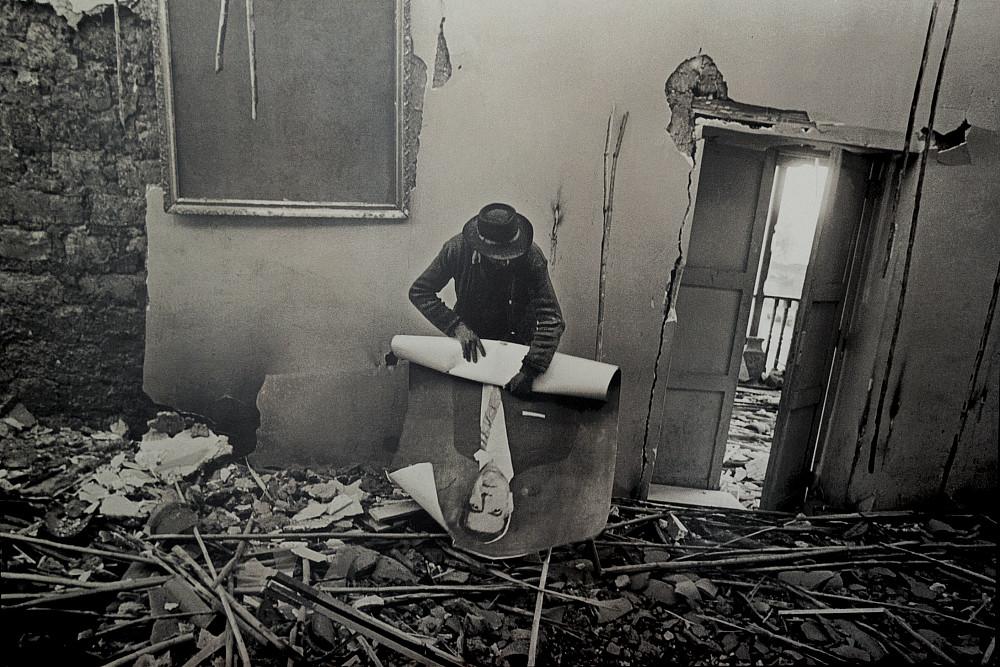
TRC的公共影响部门要求摄影师Mayu Mohanna调查摄影和摄影记者的证词,以纳入其调查结果. Mohanna recommended creating an exhibit (which became “Yuyanapaq”), a published book of photographs, and a digital photo library, and asked Chappell to co-direct the project with her.
查普尔和莫哈纳梳理了数千张来自个人收藏和公共档案的照片, including human rights organizations, the press, the church, and the police. Over 19 months of research, their team of photojournalists uncovered harrowing images depicting labor camps, massacres, mass graves, and torture — human rights violations aimed at weakening the power of the people, directly targeting journalists, grassroots organizers, and indigenous groups.
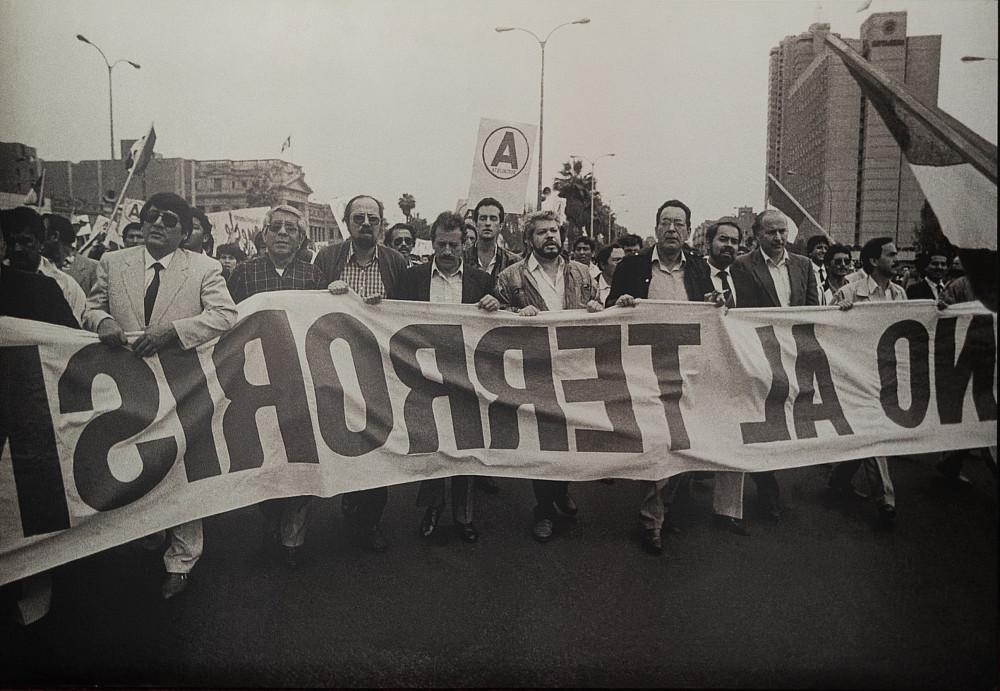
Now, 该展览因其宝贵的证据而得到了国家文化财产和博物馆登记处的认可. 它的许多照片都标有从证词和其他来源获得的信息. Beloit students have been fleshing out even more details, to the benefit of the TRC. When Toral sent the curators of “Yuyanapaq” copies of the new book, 学院收到了一封感谢信,感谢学生对TRC的使命所做的贡献.
“We’re the only institution to do student research like this,” says Toral. “With the Weissberg program, the relationship between alumni, donors, students, faculty, and staff, the results in terms of learning have been absolutely world-class.”
A family connection
2013年,由贝丝·多尔蒂(Beth Dougherty)领导的韦斯伯格人权与社会正义项目 political science professor, and Betsy Brewer, international office director emerita — collaborated with Toral, Chappell, and others to bring the traveling “Yuyanapaq” exhibit to the Wright Museum. Beloit was the first institution in the state of Wisconsin to host the exhibit, and one of few colleges to do so. The exhibit coincided with the week-long visit of Weissberg Chair Diego García-Sayán, then-president of the Inter-American Court of Human Rights.
“我们想要探索人权和社会正义超越国界的理念. That’s the point of international courts,” says Toral.
“We have international boundaries, but in the end, we’re all together in this world. We all have rights that need to be respected.”
In his lecture and conversations with students, García-Sayán讨论了被大多数拉丁美洲国家采纳的美洲法院关于普遍权利的裁决.
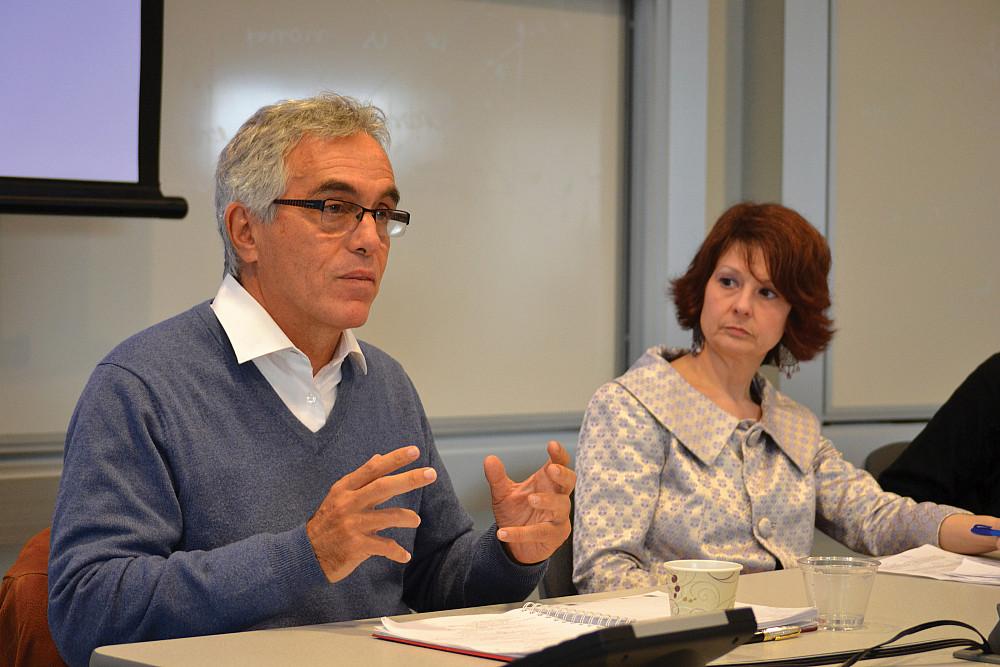
The Beloit connections were the result of family ties. While Toral was teaching a course in Peru prior to the “Yuyanapaq” project, he met Chappell through her cousin, Associate Professor of Spanish Oswaldo Voysest. Chappell came to Beloit and met with students to introduce the exhibit.
托拉尔看到了学生们对博物馆和保存集体记忆的作用的看法的转变. “Many students thought museums are where you put dead things,” says Toral. “For them to see that this conflict is an open wound, that it hasn’t healed, acknowledging that it’s there, 看到博物馆向世界敞开大门,帮助我们了解自己——我觉得这让我大开眼界.”
An optional assignment
After seeing how they engaged with the exhibit, 托拉尔在他的拉丁美洲和加勒比政治课上给学生们布置了一项作业,让他们研究这些照片中的一张. 这个研究项目非常成功,以至于他在此后的10年里把它分配到他所教的每一堂课上.
“All of the students who wrote essays were quite impressive, 但他们中很少有人(最初)对拉丁美洲研究感兴趣,” he says. “They were more interested in human rights, democracy, the empowerment of disenfranchised groups, and research methods. 他们中的许多人知道他们所做的事情的重要性,但对其他人来说,这是一个惊喜.”
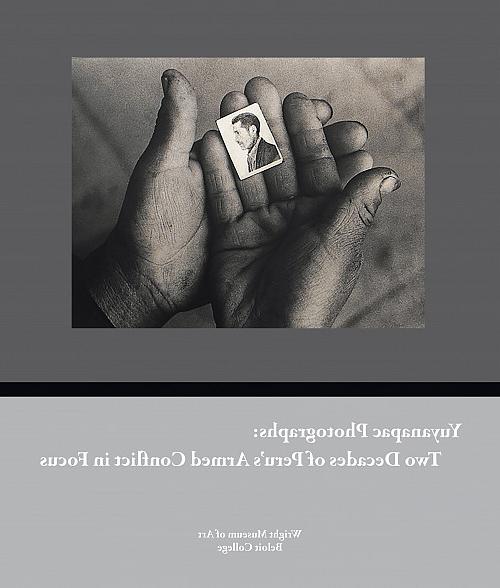
“I really wanted to help him finish the project — I felt committed to see it through,” Sarabia-Sandoval says. “María Elvira and I both wanted to see it flourish. 去年秋天,当巴勃罗告诉我这本书将于9月出版时,我真的很高兴.”
Advancing reconciliation
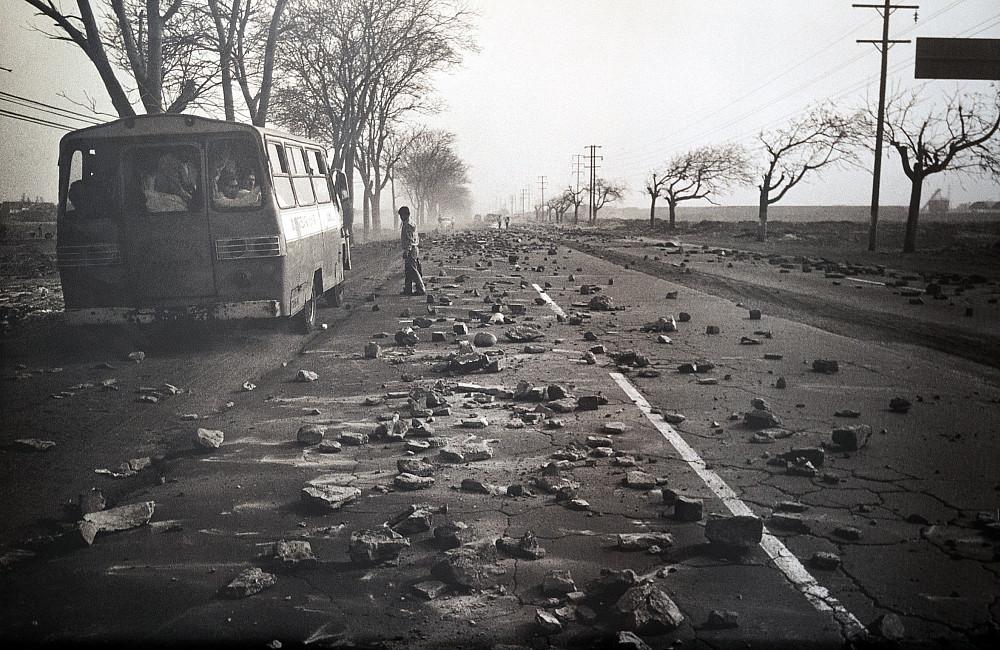
Toral was pleased to get the book of essays to print, 但是,当他联系到书中收录的16名前学生,并听说他的作业对他们的职业和生活产生了影响时,他更高兴了.
“There are so many things that are unique about this project,” he says. “It grounded students’ education in the real-world cases. 他们与先驱学者、摄影记者和法院合作,为世界树立了标准. Hundreds of millions of people now benefit from their work. By working on this assignment, 他们对推进秘鲁真相与和解委员会的目标产生了巨大的影响.
“It also showed that leadership can happen anywhere, anytime, and can help us overcome significant challenges. It shows how humble these remarkable people are, and approachable. 他们努力工作,富有创造力,没有金钱和资源,却影响了变革,伸张了正义. Students learned that they, too, can be leaders and pioneers.”
Why photographs matter
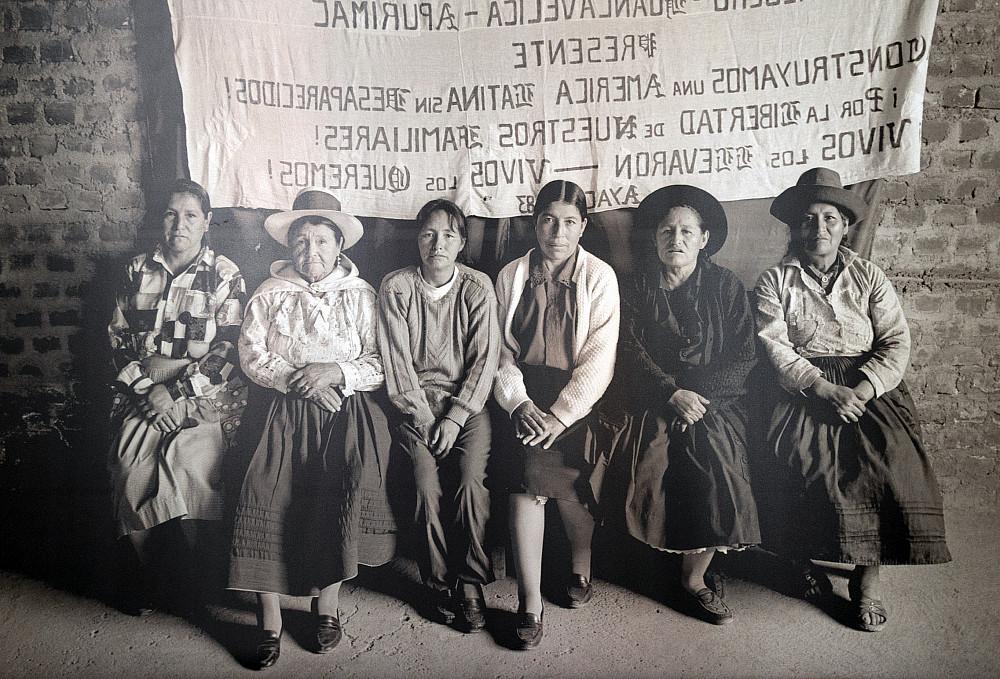
Before co-curating “Yuyanapaq,” Chappell was a longtime photojournalist, 报道秘鲁总统藤森的竞选活动和20世纪90年代初阿亚库乔地区的武装冲突. She saw violence and destruction firsthand, and early in her career, was unconvinced that her job would change anything.
In June 1992, the Shining Path called for a paro armado, or armed strike, threatening citizens to stay in the area or risk facing violence. 查佩尔被派去拍摄中央高速公路,看着“光辉道路”在山顶插上一面红旗. Chaos ensued.
“On my way back, I saw a taxi driver burnt alive by the Shining Path. It was painful. He was the age of my father. I took photos and came home shaking. 我想也许我应该去别的地方找我的家人,但我不能逃跑——我的生活就在这里. That night, I heard a big bomb and fell out of bed. I felt impacted, and like my photography wouldn’t help.”
由于受到暴力事件的惊吓,查佩尔接受了当地一家杂志的合同工作,并试图忘记. 但当她的朋友兼联合策展人马尤·莫哈纳(Mayu Mohanna)联系她,问她是否愿意参与这个后来成为“Yuyanapaq”的项目时,她说,她记得她和其他摄影记者冒着多大的风险把真相带给公众. She used her old contacts and experiences during the conflict to make a difference.
“Thanks to them, we have proof of what happened,” she says. “You can argue with the TRC’s stats or writing about the conflict, but with photography, no one can say it didn’t happen. I realized [‘Yuyanapaq’] does change things. No single person or thing can stop a war, 但摄影可以让你对那些参与其中的人的痛苦更感同身受——获得团结. ‘Yuyanapaq’ tells what happened from the eyes of the victims, puts a face and names to the victims of the war.”


